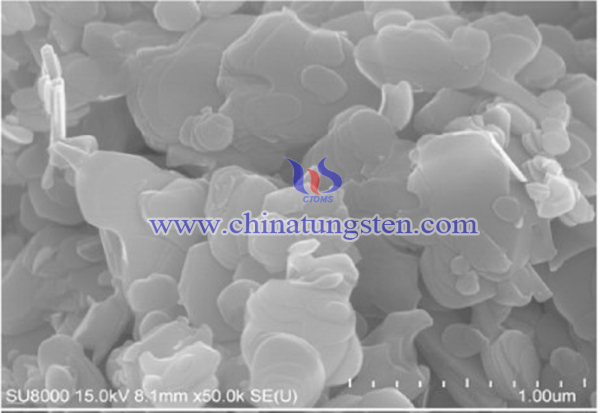WO3-X Nanosheets by Thermal Treatment of Ammonium Paratungstate for High-Performance Li-Ion Batteries
- Details
- Category: Tungsten Information
- Published on Wednesday, 03 February 2021 19:42
As the haze and other air pollutions getting more serious in cities and towns of China, most of the air pollutants were from the exhaust mission of the increasing number of vehicles. Thus, electric vehicles have been considered as a solution to control the air pollutant in rural as they don’t emit like traditional fossil-fuel vehicles. Energy-storage devices such as rechargeable Li-ion batteries (LIBs), Na-ion batteries and supercapacitors are the core of electric vehicles.

However, the lower power densities and shorter cycling lifetimes compared with fossil-fuel vehicles has limited its widely application. As a typical transition metal semiconductor, WO3 and its derivatives have the advantages of large theoretical capacity (∼700 mAh g−1), low cost, and enhanced safety (due to high melting temperature) of WO3 make it a promising LIB anode material. Hence, a preparation method of oxygen-deficient WO3-x nanosheets had been introduced using ammonium paratungstate (APT) as precursor that can be used as high-performance anode in Li-ion batteries.
The fabrication process of the WO3-x nanosheets is as below:
In a typical experiment, WO3 powder (6 g, Aladdin) was dissolved in a mixture of NH3·H2O (25 wt%, 20 mL) and distilled water (40 mL) upon gentle 2-h stirring at 50 °C, and the obtained solution was heated at 90 °C for 8 h to evaporate the solvent. The thus obtained precursor ammonium paratungstate (APT) was washed with distilled water and ethanol for several times, dried for 12 h, transferred into a tube furnace, and annealed at 600 °C for 4 h in an atmosphere of 90 vol% Ar/10 vol% H2 at a heating rate of 5 °C min−1 to afford dark blue WO3-x nanoparticles.
To synthesize WO3-x nanosheets, WO3-x nanoparticles (100 mg) were dispersed in N-methyl-2-pyrrolidinone (NMP, 20 mL) by 3 h ultrasonication, and the obtained dispersion was centrifuged at 1500 rpm for 1 h. The solid residue was removed, ultrasonicated for another 3 h, and the resulting dispersion was centrifuged at 3000 rpm. Finally, the pellet was isolated, washed with ethanol by high-speed centrifugation at 9000 rpm, dispersed in tert-butyl alcohol and freeze-dried for 24 h, and ∼34 mg oxygen-deficient WO3-x nanosheets were obtained.

In conclusion, a preparation method of oxygen-deficient WO3-x nanosheets had been introduced by thermal treatment of ammonium paratungstate (APT) can be used as high-performance anode in Li-ion batteries. The above nanosheets were employed as LIB anode materials and exhibited a specific capacity and cycling stability significantly exceeding those of oxygen-deficient WO3-x nanoparticles and commercial WO3. In addition, we investigated the effect of nanosheet loading on electrode performance, demonstrating that the best results (Li storage capacity of ∼628 mAh g−1 after 100 cycles at 100 mA g−1) were obtained at a nanosheet content of 20 wt%.
- APT Manufacturer & Supplier, Chinatungsten Online: ammonium-paratungstate.com
- Tungsten News & Prices of China Tungsten Industry Association: www.ctia.com.cn
- Molybdenum News & Price: news.molybdenum.com.cn
- Tel.: 86 592 5129696; Fax: 86 592 5129797; Email: sales@chinatungsten.com



 sales@chinatungsten.com
sales@chinatungsten.com